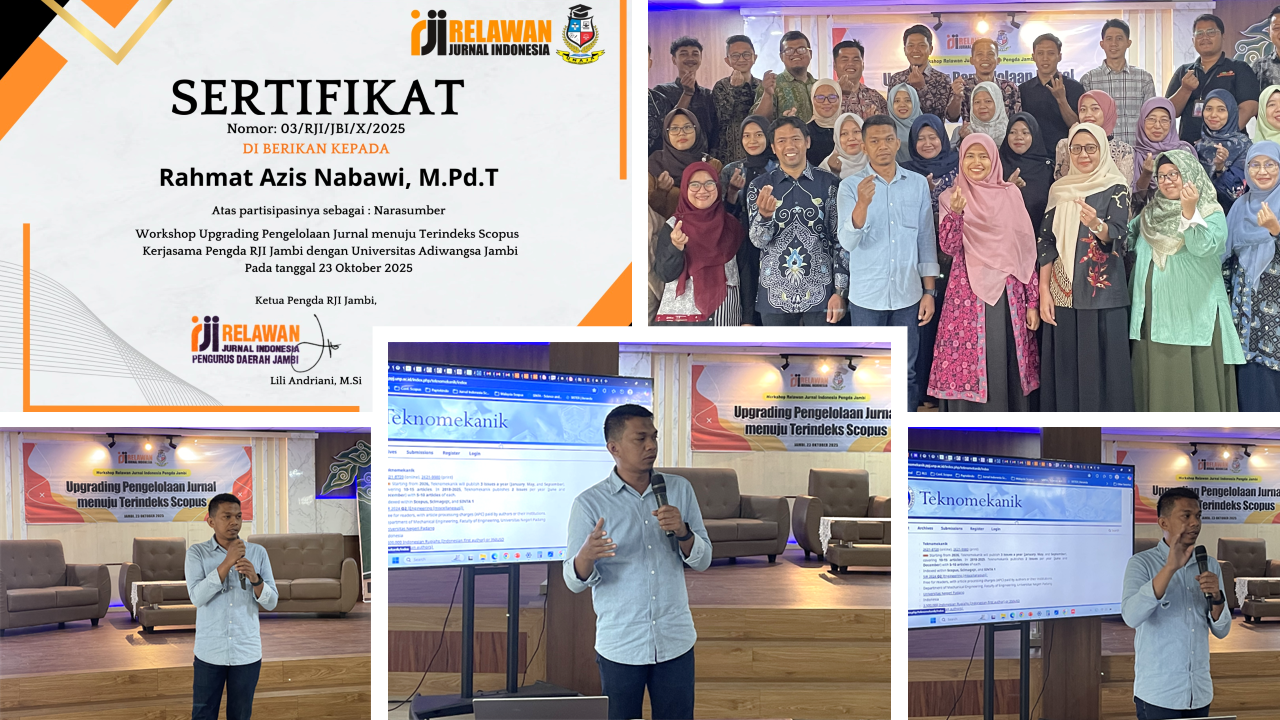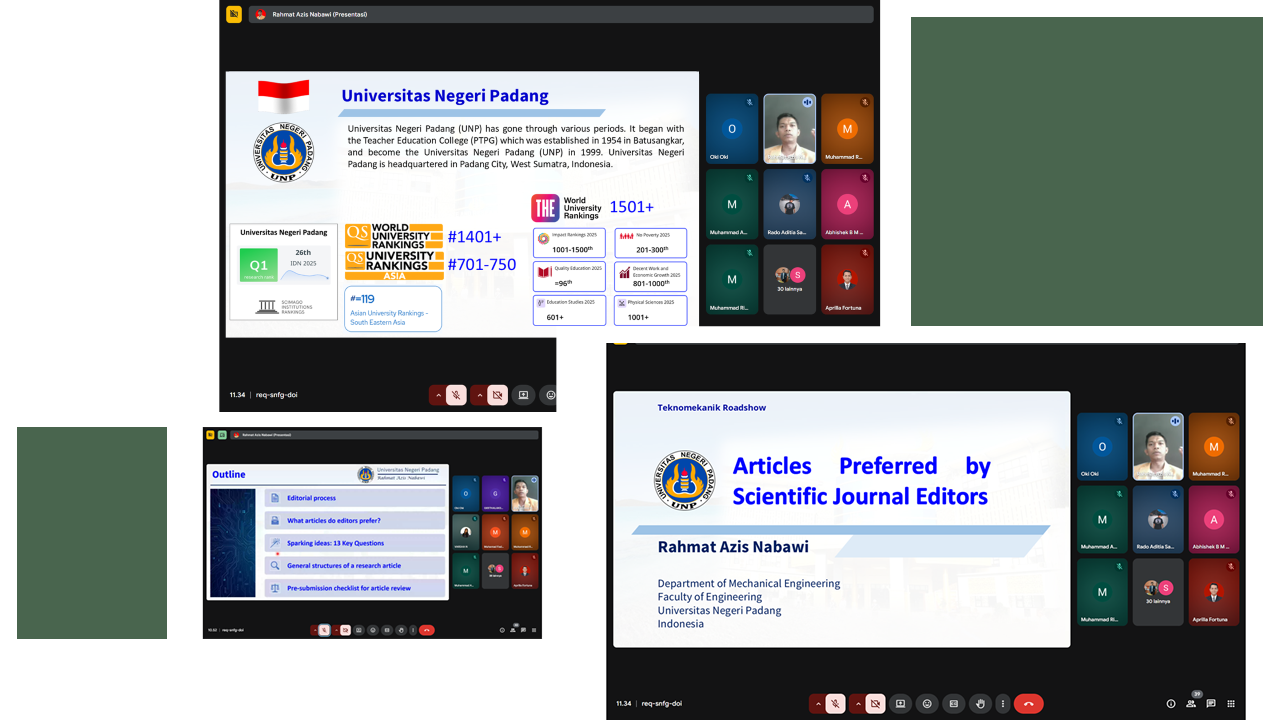Analysis Physical and Mechanical of Particle Boards Raw Materials Nipah Fruit Fiber
DOI:
https://doi.org/10.24036/tm.v2i1.2672Keywords:
Nipah Fiber, Tapioca, Particel Board, Physical Properties, Mechanical PropertiesAbstract
The raw materials of the timber industry, especially furniture, are increasingly difficult to obtain in the quantity and quality needed. The development efforts carried out were utilizing Nipah coir waste as a raw material for making particle boards. Particle boards are panel boards made of wood particles or materials containing lignocellulose. Nipah plants contain 27.3% lignin and 36.5% cellulose which has the potential to be used as raw material for particleboard production. This study aims to reveal the physical and mechanical properties of particleboards made from Nipah fruit fibre with adhesive using tapioca flour. The making of particle board is done with a ratio of 90%: 10%, 80%: 20%, 70%: 30%, 60%: 40%, by giving a pressure of 100 kg / cm2. Particle testing is carried out according to the JIS A 5908 standard (2003). From this study, the optimum results were obtained in variations of 60%:40%. The particle physical properties which have an average density value of 1.15 gr / cm3 and an average moisture content of 5.8%. While the mechanical properties obtained by the value of Modulus of Elasticity an average of 21,188.93 kg / cm2. This shows the particle board variations of 60%: 40% produced to meet the JIS A 5908 (2003) standard. Based on the analysis of the quality variations 60%: 40% of particle boards can be recommended as raw materials for interior furniture.
Downloads
References
Nurdin, H, Purwantono, & Nasrul Rivai. “Pengaruh Perekat Terhadap Kerapatan Papan Komposit Berbahan Baku Ampas Tebu”. Prosiding PB31 ISBN. 2014; 8-13.
Sudarsono, Toto Rusianto, & Yogi Suryadi. Pembuatan Papan Partikel Berbahan Baku Sabut Kelapa Dengan Bahan Pengikat Alami (Lem Kopal). Jurnal Teknologi, 2010; 3(1), 22-23.
Nurdin, H., Fernanda, Y., & Handayani, M. Analysis of Tensile Strength the Fiber Bagasse Particles Board with Resin Adhesives. Jurnal Teknomekanik, 2018; 1(1), 1-5. Journal homepage: http://teknomekanik.ppj.unp.ac.id/index.php/tekno/article/view/1
Nurdin, H, Hasanuddin, & Irzal. “Analysis Of Behavior Deflection Composite Particle Board Cane Baggase Using Adhesive Tapioca”. ICOMSET ISBN, 2015; 448-451.
Maloney, T.M. Modern Particleboard dan Dry-Process Fiberboard Manufacturing. San Francisco: Miller Freeman, Inc. 1997.
Departemen Kehutanan. Atlas Kayu Indonesia Jilid III. Pusat Penelitian dan Pengembangan Teknologi Hasil Hutan. Badan Penelitian dan Pengembangan Kehutanan. Bogor. 2004
JIS. A 5908, Particles Boards, Japan: Japanese Standard Association, 2003.
Sugiyono. Metode Penelitian Kuantitatif, Kualitatif, dan R&D. Bandung: Alfabeta. 2017.
Nurdin, H, Purwantono. Pengaruh Jenis Serat Pada Komposit Polimer Terhadap Kekuatan Tarik. Jurnal SAINTIKA ISSN. 2010; 10 (1).
Bowyer J.L., Shmulsky, R., & Haygreen, J.G. Forest Products and Wood Science An Introduction 4th Edition. IOWA State Press A Blackwell Publ, USA. 2003
Abdurachman & Nurwati, H. Sifat Papan Partikel Dari Kulit Kayu Manis. Jurnal Penelitian Hasil Hutan. 2011; 29(2): 128-141.
Sirait, M. S., Setyawati, D., & Rahmaniah, D. Sifat-Sifat Papan Komposit dari Sabut Kelapa, Limbah Plastik dan Perekat Urea Formaldehida. Pontianak: Universitas Tanjungpura. 2012
Haygreen, J. G., Bowyer, J. L. Hasil Hutan dan Ilmu Kayu. Yogyakarta: Gajah Mada University Press. 1996.
Nuryaman, A., Iwan, R., & Pamona, S.N. Sifat Fisik Mekanik Papan Partikel dari Limbah Pemanenan Kayu. Jurnal Ilmu dan Teknologi Hasil Hutan. 2009; 2(2): 57 – 63.
Massijaya, Y.M., Hadi, Y.S., Tambunan, B., & I. Sunarni. Studi pembuatan papan patikel dari limbah kayu dan plastic polistirena. Jurnal Teknologi Hasil Hutan. 1999. 12 (2).
Massijaya, Y. M. Industri Pengolahan Kayu Indonesia Ditinjau dari Sudut Ketersediaan Upaya Penyelamatan Bahan Baku. Bogor: Departemen Hasil Hutan Fakultas Kehutanan IPB Bogor. 2007.
Rudi.S. & Andriati A.H. Utilization of Eucalyptus Oil Refineries Waste for Cement Particle Board. International Journal of Sustainable Construction Engineering and Technology; 2012. 3(2) : 2 – 10.
Maloney, T.M. Modern Particleboard dan Dry-Process Fiberboard Manufacturing. San Francisco: Miller Freeman, Inc.1997.
Nurdin, H., Pengaruh Penggunaan Jenis Serat Pada Komposit Polimer Terhadap Kekuatan Tarik. Zona Teknik. 2008; 3(2): 143-150.
Downloads
Published
Issue
Section
License
Copyright (c) 2019 M Saddikin, Hendri Nurdin, Hasanuddin Hasanuddin, Primawati Primawati

This work is licensed under a Creative Commons Attribution 4.0 International License.







